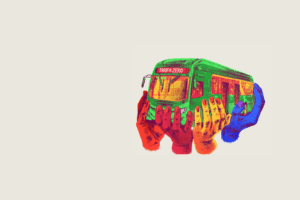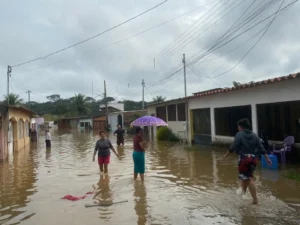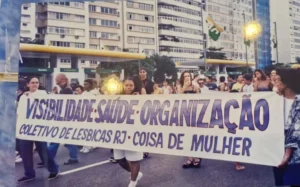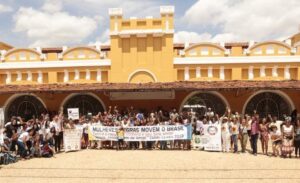By Patrick Bond
“The World Cup in South Africa was a huge, huge financial success for Africa, for South Africa and for Fifa” – Sepp Blatter
South Africa’s experience in June-July 2010 was mixed, with huge long-term financial deficits and a distorted, short-lived psychological improvement in the wake of the world’s main soccer tournament.
The government had committed itself to spending $ 6 billion from the public purse to prepare the country for the 2010 Fifa World Cup. This was mainly for constructing/upgrading ten stadiums, fast-tracking a fast-train from OR Tambo Airport to Sandton and building a new airport outside Durban, improving roads and building-associated infrastructure. But there were also intangible costs associated with the hosting of the 2010 World Cup: political corruption; dubious priorities and overspending; repatriation of profits; suspension of democratic freedoms and sovereignty; protest and defiance; and xenophobia.
The Fifa mafia, dubious priorities and overspending
Fifa endorsed a racially-pure white South African team for decades, until opposition led by the late Dennis Brutus became formidable in 1976. But class apartheid replaced racial apartheid, and this has left contemporary South Africa with similar contradictions of exclusion, hard-wired into the cities that hosted the World Cup in 2010.
For example, World Cup visitors would have observed degenerate conditions in the Cape Flats, while in contrast, the new $630 million Green Point stadium in Cape Town received vast subsidies thanks to rulers from both the white-liberal-dominated Democratic Alliance and the black-nationalist African National Congress, respectively. An upgrade of the Newlands rugby pitch (in a white suburb) or of Athlone’s stadium (in a black neighbourhood) would have been far cheaper. The latter was reportedly rejected, according to a representative of Fifa, because “A billion television viewers don’t want to see shacks and poverty on this scale.”
The third-largest city, Durban, boasts the most memorable new sports facility ($440 million worth, overrun from an original $225 million budget), as well as the country’s highest-profile municipal sleaze and chutzpah, exuding from a city manager, Mike Sutcliffe, who tried to gentrify a century-old Indian/African market for Fifa’s sake – but was repelled by community opposition. Durban’s 70,000-seater Moses Mabhida stadium is delightful to view, so long as we keep out of sight and mind the city’s vast backlogs of housing, water/sanitation, electricity, clinics, schools and roads, and the absurd cost escalation.
Harder to keep from view is next-door neighbour Absa Stadium, home of Sharks rugby, which seats 52,000 and which easily could have been extended. The Sharks have said they cannot afford to make the move to Mabhida because of high rental costs. Trevor Phillips, former director of the South African Premier Soccer League, asks, “What the hell are we going to do with a 70,000-seater football stadium in Durban once the World Cup is over? Durban has two football teams which attract crowds of only a few thousand.”
The local winners in the process are not footballers nor even rugby teams that municipal officials fruitlessly hope will one day fill the white-elephant stadia. They are the large corporations and politically-connected black ‘tenderpreneurs’ (who win state tenders thanks to affirmative action, if linked to established white firms) especially in the construction sector. This tenderpreneurship strategy was profoundly corrupt, according to Moeletsi Mbeki, brother of former president Thabo: “It was a matter of co-option, to co-opt the African nationalist leaders by enriching them privately.”
The macro-implications will be felt over many years, because the World Cup has worsened South Africa’s world-leading income inequality and set the stage for future economic calamities once debt payments become due. The overspending on new stadiums (in Durban, Cape Town, Port Elizabeth, Nelspruit and Polokwane) plus extravagant refurbishment expenses for Soccer City brought the state subsidy to over $3.6 billion, not to mention spending on associated infrastructure. It has been impossible for nearly all the stadiums to even cover their operating expenses after the final World Cup game.
An excess portion of the stadium bill came from unnecessary imports, at a time the South African foreign debt rose from the $24 billion Nelson Mandela inherited from apartheid to more than $140 billion today. Paying interest on the debt plus dividends to the huge, formerly South African, but now overseas-based multinational corporations – Anglo American, BHP Billiton, DeBeers, Old Mutual, SAB-Miller beer, Liberty Life, Didata, Investec Bank – pushed the country to the very bottom of the emerging markets rankings.
Other indirect costs to the economy are also important to count. The World Cup was partly responsible for the country’s construction bubble, which drove the economy at 5 per cent GDP increase per year from 2004-08, just as happened in the US prior to its crash.
With the World Cup as justification, the state’s investment in new luxury transport infrastructure soared. The $3.6 billion Gautrain rapid rail costs riders five times more than previously advertised, gambles on shifting rich people’s behaviour away from private cars, but it has not dislodged sufficient Johannesburg-Pretoria commuters to avoid a $120 million annual subsidy bill. The break-even point is 100.000 passengers per day but only 45 000 use the Gautrain. As labour leader Zwelinzima Vavi put it, Gautrain “does nothing for those who really suffer from transport problems – above all, commuters from places like Soweto and Diepsloot. Instead, it takes away resources that could improve the lives of millions of commuters.”
And was the new $1.1 billion King Shaka International Airport wise for Durban, given that the old one had excess capacity until 2017, and given the doubling of distance and taxi fares from central Durban? The closure of Durban International prematurely proved the single biggest embarrassment for Local Organising Committee leadership and the Airports Company of South Africa, when King Shaka could not cope with VIP private jets that jammed the airport on July 7, the day of the semi-final, leaving more than 1000 furious soccer fans in planes that had to be rerouted.
Loss of sovereignty and democratic rights
British sports journalist Andrew Jennings, author of Foul!, has documented in painful detail Fifa’s abuse of host countries, extending far beyond the unnecessary or overpriced infrastruture. According to Jennings a third of Fifa’s executive “are involved in bribery and corruption, ticket rackets and diversion of funds.” No one uncovered explicit fraud in South Africa, in spite of a combination of a corruption-riddled Fifa and a corruption-riddled government.
Later, it was discovered that most of the soccer stadiums that were built for the World Cup were the victims of construction company collusion, with a $200 million fine levied against the country’s largest building firms. But the most pernicious corruption associated with the World Cup was actually above board, in formal legal contracts that were kept secret until a judge ordered them opened to public scrutiny in June 2010. As Jennings concluded, “South Africa bent over and let Fifa have their way. Officials and the government have sold South Africa down the river: ‘Bye Africa, bye suckers!’”
There are many ways in which South African sovereignty was violated by those contracts. Major geographical spaces, especially those around which the poor engage in the informal economy, have been legislated as local business Exclusion Zones (or Fifa zones), in which the South African Constitution would be temporarily suspended. Instead, the South African Government was obliged to enforce Fifa’s laws, including the curtailing of democratic rights such as peaceful marches and protests.
The national security apparatus told Parliament it would throw a 10km ‘cordon’ around the stadia, replete with “air sweeps by fighter jets, joint border patrols with neighbouring countries, police escorts for cruise ships and teams of security guards with ‘diplomat’ training.” The aim, according to safety and security Minister Nathi Mthethwa, was to “prevent domestic extremism, strike action and service delivery protests.”
To serve Fifa, Durban gave up a great deal of its own power as well as common sense. To illustrate, a few dozen metres away from where poor people were denied their source of fishing and income, expensive imported (German) marquee tents apparently required erection by a German construction company. And Fifa took sole occupation of Moses Mabhida Stadium, even on the 75 percent of days that soccer wasn’t played over the month, keeping the facility off-limits to visitors.
According to Wits journalism professor Anton Harber, this was part of a general takeover: “Fifa has banished those people who try to make a living around the stadiums, they have made us divert development money into fancy stadiums, and we have had to give up all sorts of rights for the month they will be in control of our cities.”
Not only did Fifa get full indemnity “against all proceedings, claims and related costs (including professional adviser fees) which may be incurred or suffered by or threatened by others.” In addition, according to one official agreement, SA provided police specifically “to enforce the protection of the marketing rights, broadcast rights, marks and other intellectual property rights of Fifa and its commercial partners.” (I learned this first hand on July 2 when detained by police for circulating an anti-xenophobia flier at the Fan Fest.)
Journalists getting Fifa accreditation also pledged not to throw the World Cup ‘into disrepute’ while reporting, at the risk of being banned. Hence, press freedom was compromised. With such pressure, no wonder that the documentary film Fahrenheit 2010 was turned down by the three major SA television networks in the period before the World Cup. Fifa’s definition of “disrepute” is writing anything that “negatively affects the public standing of the Local Organising Committee or Fifa.”
Fifa also received special judicial treatment, with 24/7 prosecution of several dozen criminal incidents, including a three-year jail term for a man whose only crime was holding 30 Fifa game tickets ‘without explanation’, as Fifa tried to cut down on the black market. Two Dutch ‘ambush marketers’ were arrested as 36 women wore orange dresses, representing Bavaria brewery, to the Holland-Denmark game, though the firm’s logo was tiny.
Cases of this sort made Fifa seem extremist. The loss of state sovereignty to Fifa surprised observers, given the enormous experience that former president Thabo Mbeki and his negotiating team amassed in world economic policy negotiations since apartheid ended in 1994. Yet Mbeki allowed Fifa and multinational corporate sponsors full access to ‘exclusion zones’ with no taxes, no exchange controls and no security worries.
Trickle-down promises broken
Other logistical support, access control, and protection were provided to Fifa’s corporate partners (Adidas, Sony, Visa, Emirates, Coca Cola, Hyundai-Kia, McDonalds, local phone giants Telkom and MTN, First National Bank, Continental Tyres, Castrol, McDonalds, and Indian IT company, Satyam). Only Fifa-endorsed items were advertised within a one kilometre radius of the stadium and along major roads.
Little money trickled down and most evaporated. Crafts, tourism and township soccer facilities were all meant to benefit. But as SA Football Association Western Cape provincial president, Norman Arendse, confessed, Fifa’s ‘fatal’ top-down approach left grassroots soccer with merely ‘crumbs’. Aside from ear-splitting vuvuzela plastic trumpets, the much-vaunted ‘African’ feel to the World Cup was muted, as women who typically sell ‘pap’ (corn meal) and ‘vleis’ (inexpensive meat) just outside soccer stadiums were shunted off at least a kilometre away. According to leading researcher, Udesh Pillay of the SA Human Sciences Research Council, in 2005, one in three South Africans hoped to personally benefit from the World Cup, but this fell to one in five in 2009 and one in 100 by the time the games began.
Danny Jordaan, CEO of the World Cup Local Organising Committee, predicted in 2005 that the games would be worth as much as $7 billion profit to South Africa, even after 2010-related infrastructure expenses. But the actual financial outcome was hotly disputed.
First, the hospitality industry’s market was glutted in many areas, after a third of rooms booked by Fifa’s Match agency were cancelled in May. Many who added rooms to B&Bs or kept large blocks of hotel rooms open lost vast sums.
Likewise, ordinary workers were misled into thinking they would benefit from manufacturing opportunities associated with World Cup paraphernalia, but as Congress of SA Trade Unions spokesperson Patrick Craven ruefully concluded, “Local companies have lost out, Chinese companies have emerged as big winners.” Workers lost insofar as they failed to gain local production rights for the Zakumi doll mascot, which was instead produced in what the trade union movement alleged were Chinese sweatshops where teenagers were paid $3/day. The man who arranged the deal was ANC Member of Parliament Shiaan-Bin Huang, whose home district in KwaZulu-Natal, Newcastle, had many idle factories which could have produced Zakumi.
Residents, too, suffered, especially if they were working class and needed treatment at local hospitals. As Times journalists observed, “Fifa’s guidelines for designated hospitals around the country – which include keeping wards half empty – will result in long-term patients removed from their beds and shifted to facilities elsewhere. Routine referrals to major specialist hospitals have already been curtailed, if not stopped, until after the World Cup, leaving hundreds of patients without care for the next two months.”
Protest and defiance
The mood of poor and working people remained feisty in the run-up to the big event, with several dozen protests each day according to police statistics, most over ‘service delivery’ shortcomings. Several protests were aimed explicitly at the way the World Cup was being implemented.
For example, more than a thousand pupils demonstrated against the Mbombela stadium (Nelspruit) when schools displaced in the construction process were not rebuilt. Other World Cup-related protests were held by informal traders in Durban and Cape Town, against Johannesburg officials by Soccer City neighbours in impoverished Riverlea township, against construction companies by workers, against the stadium construction by disabled people, and against national officials by four towns’ activists attempting to relocate the provincial borders to shift their municipalities to a wealthier province.
Fifa had insisted on a protest-free zone, with regular police bannings of attempted marches – even an innocuous education-for-all rally on June 7 (even though Fifa had sponsored the group, One Goal, requesting permission to march) – until sufficient resistance emerged to overcome the harassment. A few other victories were recorded along the way. Thousands of stadium construction workers fought for higher wages and often won. And AIDS activists prevented from distributing condoms at stadiums objected and won that right.
On 13 June 2010 in Durban, several hundred security workers at Durban’s Moses Mabhida Stadium began revolting after the Germany-Australia game, demanding payment of a promised bonus. They only received $27 for 12 hours’ work; outsourcing and super-exploitation have soured employee relations in the often dangerous security sector. Police tear-gassed and stun-grenaded 300 to break up the protest and promised that the ringleaders would be arrested. But half the ten stadia suffered this fate, as workers downed tools against the security labour brokers, leading to mass firings and compelling more expensive policing to come to Fifa’s aid as internal security.
The most successful protest explicitly against the World Cup was by hundreds of Durban informal traders facing displacement from the century-old Early Morning Market. Were it not for sustained resistance over a year-long period, including a pitched battle with police in mid-2009, their space would have been transformed into a shopping mall, without them.
Some of the most impressive mobilisations were on the hardest front, perhaps: pop culture. To illustrate the challenge, Somali-born Toronto-bred musician K’naan had used his hit, ‘Wavin’ Flags’, to promote the notion that a young boy on a dusty soccer field could simply drink a Coca Cola and become a world-class player. His remixed tune for Fifa self-censored all his earlier version’s harder, anti-war lyrics.
Explaining why he remixed, K’naan explained: “It’s about the one time that we all get together and the world forgets its conflict and its problems and we focus on this unity and celebration. That moment is connected now to ‘Wavin’ Flag’.”
This kind of tragic commercialisation and depoliticisation called for a culture jam, readily provided in the tune ‘Wavering Flag’ by the Playing Fields Connective.Then there were the Chomsky AllStars, whose ‘Beautiful Gain’ rip-off of the World Cup was advertised as follows: “Blending punk, blues, dub and Afrobeat, ‘The Beautiful Gain’, with its infectious melody and sublime rhythms, is set to become the ‘Free Nelson Mandela’ of the 21st century.” Yet more ripping protest music was released by a network of artists who came together to publicise Khulumani Support Group, the anti-apartheid victims’ network which is suing corporations in the United States courts for taking away profits and interest when they should have been observing sanctions. Durban’s Iain Robinson (Ewok) contributed the tune ‘Shame on the Beautiful Game’ which soon joined a whole CD of hip-hop protest tunes produced by the Grahamstown-based group Defboyz.
But there were many aggrieved by Fifa and its South African government allies who did not fare so well. Durban’s subsistence fisherfolk unsuccessfully fought a forced removal from piers at the World Cup Fan Fest park on the main beach. Johannesburg and Cape Town traders also lost their battle for space, due to the exclusion zones. And Cape Town housing displacees were shuttled into a bizarre, apartheid-style ‘temporary’ transit camp, Blikkiesdorp. Other losers included environmentalists concerned about the World Cup’s vast carbon emissions – twice the 2006 record – and the South African government’s attempt to ‘offset’ these through ‘greenwashing’ strategies such as the Clean Development Mechanism and inappropriate tree planting.
Most troubling, the networks of independent leftists which normally mobilise against large international events – the World Conference Against Racism (12,000 protesters on 31 August 2001) and the World Summit on Sustainable Development (30 000 marched on 31 August 2002) – were simply unable to generate enthusiasm for two attempted marches.
Conclusion
The World Cup is a formidable spectacle, not least because it attracts the world’s largest sports audience. South Africa’s hosting has gone off nearly flawlessly, contrary to predictions by Afropessimists. Fifa’s profit increase over the 2006 games in Germany was at least 50 per cent. Yet it is equally evident that aside from the unparalleled – albeit temporary – psychological boost, the rewards to society are outweighed by the burdens.
The international experience suggests that mega-sporting events were organised largely by the private sector, with little or no accountability to citizens or elected officials, although its decisions were likely to have major public policy implications. As Jennings has emphasised, Fifa’s “unaccountable structure … is honed to deliver the game to the needs of global capitalism – with no checks or restraints. Just cheques.” The South African experience was no different. The Fifa 2010 World Cup paid rhetorical lip service to reducing the socio-economic inequalities in the region; addressing the needs of the poor; was largely driven by corporate interests; and underwritten with public funds, with limited or no public participation; and undermined sovereignty and democratic rights.
In South Africa, once soccer hype faded and social protests become more insistent, local elites realised their mistake in hosting these games in such a wasteful, arrogant manner.
They may learn what we already know: profiteering by business and genuine joy associated with the world’s most loved sport are mutually incompatible. The question for Brazilian soccer-lovers and for critics of multinational corporate rule is whether they will have greater success establishing countervailing pressure and reversing Fifa’s power. Only with an antidote to commercialisation and foreign control can we truly call soccer the beautiful game.




